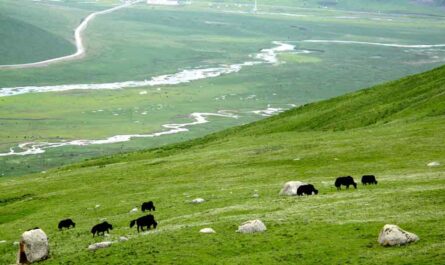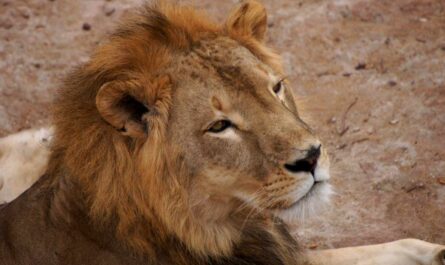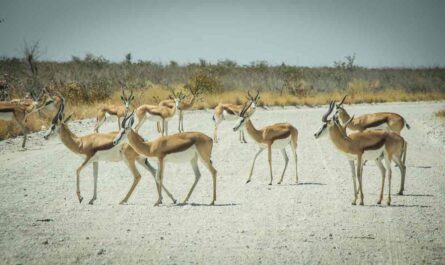There are plenty of interesting facts about Ethiopia. This African country is full of energy, hope, success, and struggle that everyone should learn. Ethiopia, a landlocked country in the Horn of Africa, boasts a diverse geography, from the rugged Simien Mountains to the Danakil Depression. With a predominantly agricultural economy, coffee production is a significant contributor. The people of Ethiopia, known for their rich cultural heritage, comprise various ethnic groups, each with unique traditions and languages. In this article, I am going to talk about interesting facts about Ethiopia.
Interesting Facts about Ethiopia: History, Travel, Culture
In recent years, Ethiopia has experienced a growing entrepreneurial spirit, fostering a burgeoning startup ecosystem. Technological innovation has gained momentum, with a focus on mobile technology and e-commerce. The historical significance of Ethiopia is evident in ancient sites like Lalibela’s rock-hewn churches and Aksum’s obelisks, reflecting its long-standing role in African history. Let’s find some interesting facts about Ethiopia below!
1. Rastafari Roots in Ethiopia
Venture along the Ethiopian roads, and you may encounter a genial cohort of roadside Rastafarians. Beneath the canopies of lush foliage, they eagerly weave narratives of the region’s allure, acting as custodians of local wisdom. While the Rastafari movement often finds its roots in the sun-kissed soils of Jamaica, its inspirational genesis traces back to the revered Ethiopian emperor, Haile Selassie. His enigmatic presence is the bedrock upon which this faith, with its kaleidoscopic blend of spirituality and cultural ethos, finds its genesis.
2. Haile Selassie: From Tafari Makonnen to Emperor
In the tumultuous era of the 1930s, a fascinating group of Jamaicans found themselves enraptured by the belief that Haile Selassie, the leader of Ethiopia, embodied the messianic essence of Biblical teachings. Before adopting his imperial title, resonant with divine symbolism as “the power of the trinity,” he bore the name Tafari Makonnen. Before ascending to the imperial throne, Selassie served as the Ras, a regional governor, a testament to his journey from regional governance to becoming the Emperor. This historical trajectory mirrors the fervent conviction that positioned him as a black leader of an independent African nation, solidifying his role in the annals of Ethiopian and Jamaican history.
3. The Gelada Baboon: A Misnomer in the Wilderness
In the realms of Ethiopia, the gelada baboon presents a captivating paradox—it defies its classification as a baboon, belonging instead to the exclusive fraternity of monkeys. This enigmatic creature, the last surviving species of ancient grazing primates, earns its epithet, the “Bleeding Heart” baboon, from the arresting transformation of the female’s chest patch. A dazzling crimson hue adorns this area, signaling peak fertility. Beyond its zoological intrigue, the gelada baboon serves as a living testament to the intricacies of Ethiopia’s rich biodiversity, embodying the delicate dance between ancient lineage and vibrant vitality.
4. Ethiopia’s Gift to Palates: The Origin of Honey Wine
Delve into the tapestry of Ethiopia’s cultural heritage, and you’ll uncover a delectable secret—the birthplace of honey wine, known locally as t’ej and globally recognized as mead. Ethiopia, with its rich landscapes and diverse flora, stands as the progenitor of this ancient elixir. This golden nectar, brewed from fermented honey, not only tantalizes palates but also weaves a narrative of tradition and innovation. As t’ej continues to transcend borders, its Ethiopian roots remain an intoxicating reminder of the country’s contribution to the world’s culinary tapestry.
5. Tooth Sacrifice for Aesthetic Tradition
Delving further into the realm of lower lip plates, the seemingly unconventional practice unravels a compelling narrative of sacrifice and tradition. The deliberate removal of teeth, a custom closely intertwined with the donning of these lip adornments, amplifies the intriguing tapestry of Ethiopian cultural practices. The voluntary extraction of teeth becomes a symbolic gesture, highlighting an individual’s allegiance to the prevailing aesthetic norms. This captivating fusion of tradition and personal sacrifice adds layers of complexity to Ethiopia’s cultural identity, making it a subject of fascination for those exploring the myriad expressions of beauty worldwide.
6. Ethiopia’s Resilient Stance Against Colonization
Ethiopia emerges as a beacon of resilience on the African continent, having valiantly resisted the pervasive wave of colonial conquest during the Scramble for Africa. Despite the relentless efforts of imperial powers seeking to subjugate and exploit, Ethiopia stands tall as one of the few nations that successfully evaded colonization. Notably, the Italian occupation, while enduring for a period spanning at least five years, failed to permanently subdue this indomitable nation. Ethiopia’s steadfast resistance adds a distinctive chapter to the broader narrative of African nations grappling with the tumultuous era of colonization, solidifying its status as a testament to the enduring spirit of independence and sovereignty.
7. Surma Stick-Fighting: Where Strength Meets Courtship
Nestled in the southwest of Ethiopia, the Surma people engage in a mesmerizing dance of strength and courtship—stick fighting. This traditional sport is a crucible that tests the mettle of men, evaluating their strength, coordination, and competitive fervor. However, its significance extends beyond mere physical prowess. The three-month stick-fighting season becomes a societal forum where victorious warriors earn more than just acclaim—they gain the opportunity to meet potential life partners. In this ritualistic dance of combat, villages collide, not only in battle but also in the subtle negotiations of courtship, entwining the realms of strength and love in a unique cultural tapestry.
8. Ethiopia’s Geographical Significance
Ethiopia, a landlocked country in the Horn of Africa, boasts a geographical prominence as the source of the Blue Nile. This mighty river, combined with the White Nile, constitutes the Nile River, reigning as the longest river on Earth. The significance of Ethiopia in shaping the course and vitality of this iconic river underscores its pivotal role in the African continent’s hydrological tapestry.
9. Ethiopia’s Spiritual Tapestry
Deeply ingrained in Ethiopia’s cultural fabric is its profound spirituality, with historical roots suggesting it was among the early adopters of Christianity. A staggering testament to this is the country’s mention in the Bible—a remarkable 40 times. Moreover, Ethiopia finds itself intertwined in the pages of the Quran and Homer’s Odyssey. The ancient city of Aksum, claiming to cradle the Ark of the Covenant—the sacred repository of the Ten Commandments given to Moses by God—adds an extra layer of mystique to Ethiopia’s spiritual narrative.
10. The Enigma of the Ark in Ethiopia
The Biblical Ark of The Covenant, a sacred relic said to house the revered 10 Commandments, is shrouded in mystery within the confines of a church in Ethiopia. The epicenter of this enigma is the ‘Mother Church of Ethiopia,’ St. Mary of Tsion, an ancient sanctuary veiled in historical significance. A mystifying aura surrounds this repository of divine artifacts, and its existence hinges on the sacred command that not even the appointed custodian is permitted to gaze upon it, perpetuating the elusive nature of its presence.
11. Ethiopia: Cradle of Humanity
Some of the oldest traces of human existence on our planet lead us to the rugged landscapes of Ethiopia. This East African nation, steeped in antiquity, is believed to be the birthplace of Homo erectus, a species that emerged more than 1.8 million years ago. The Afar region, specifically, has yielded archaeological treasures, suggesting it was from here that our ancestors embarked on the journey to populate Eurasia. It was in this very soil that the echoes of early tool usage resonate, with a 3.2-million-year-old hominid skeleton discovered by paleoanthropologists Donald Johanson and Tim D. White in 1972, further cementing Ethiopia’s standing as a cradle of human civilization.
12. Ethiopia: The Unconquered Beacon
In the intricate tapestry of African history, Ethiopia stands as a remarkable outlier—a nation that proudly eluded the clutches of colonial rule. It is the oldest independent country on the African continent, standing tall as the only one to defy the tide of European colonialism. While much of Africa underwent the Scramble for Africa, Ethiopia remained steadfast in preserving its sovereignty. Although briefly occupied by Italians, the resilience of its people ensured a swift return to self-governance. Ethiopia’s defiance is encapsulated not only in its historical struggle against colonial forces but also in its distinction as the first African nation to join the League of Nations, a testament to its commitment to global peace.
13. Ethiopia: Triumph Over Colonial Aggression
Ethiopia’s saga of resistance extends beyond mere independence; it resonates in the annals of triumph against European colonial powers. The First Italo-Ethiopian War of 1895-1896 became a defining moment when Ethiopian forces thwarted Italian attempts to establish dominance. The Battle of Adwa emerged as a pivotal confrontation, where the Ethiopian army delivered a resounding blow to the invading Italians, securing Ethiopia’s sovereignty. This victory reverberated as a symbol of pan-Africanism, influencing other nations in their struggles for independence. Even during the subsequent Italian occupation from 1936 to 1941, Ethiopia’s spirit endured, with locals jesting about waiting for railways and buildings before ousting their occupiers.
14. Ethiopia: Royalty and Legacy
Beneath the vast Ethiopian skies lies a rich tapestry of rulers, including emperors and queens who have left an indelible mark on history. Queen Zewditu, who reigned from 1916 to 1930, earned global recognition as the first female African head of state. Delving into the nation’s past, one encounters the enigmatic Queen Gudit in the 10th century, whose reign is tinged with the flames of church burnings. The moniker “Candace” resonates through the epochs, a regal title for ancient Ethiopian queens. The dynastic thread, claiming descent from King Solomon and the Queen of Sheba, persisted until 1974, with Haile Selassie I marking the culmination of Ethiopia’s imperial legacy.
15. Etymology Unveiled: Ethiopia’s Linguistic Tapestry
The very name ‘Ethiopia’ unravels a linguistic tapestry rooted in the Greek phrase “Αιθιοψ” or “aithiops,” a lexical journey that translates to “charred or burnt.” This etymological revelation adds a layer of depth to the nation’s nomenclature, evoking images of a land marked by historical fires or perhaps symbolizing resilience rising from the ashes. The very essence of the country seems intricately woven into the fabric of its name, a poetic reflection of a storied past.
16. Ethiopia: The Apex of Africa
Ethiopia, a geographical marvel, boasts an astonishing statistic that elevates it to unparalleled heights – more than 70% of Africa’s majestic mountains find their home within its borders. Aptly christened “the roof of Africa,” this nation’s expansive terrain cradles soaring peaks that touch the heavens, forming a landscape that commands both awe and reverence. The undulating majesty of Ethiopia’s mountainous expanse serves as a testament to the grandeur inscribed in its topographical contours.
17. Dallol: The Abyssal Extravaganza
Venturing into the heart of Ethiopia unveils the surreal spectacle of the Danakil Depression, a geographic crucible that cradles Earth’s nadir. Here, at the abyssal depths, lies Dallol, a subterranean marvel and the lowest point on our planet, plunging a mesmerizing 380 feet (116 meters) below sea level. In the belly of this geological marvel, a solitary lava lake, Dallol, stands as a testament to nature’s fiery crucible. It is a cauldron of extremes, not merely the lowest point but also the hottest place on Earth. The searing heat of Dallol etches its indomitable presence into the collective consciousness of those who dare to explore the boundaries of Earth’s geographical extremes.
18. The Majesty of the Great Rift Valley
Running from the northeast to the south of Ethiopia, the Great Rift Valley stands as a geological wonder. This rift, unique to Africa, is a captivating feature visible even from outer space. Its distinctiveness is accentuated by the string of lakes nestled within the Western Rift, marking Ethiopia’s landscape with an awe-inspiring and unparalleled grandeur.
19. Ethiopia’s Christian Relics: Echoes of Antiquity
In the northern Ethiopian city of Aksum, history stands tall in the form of ancient obelisks and the St. Mary of Zion Christian church. These monuments bear witness to the antiquity of Ethiopia’s Christian legacy, with legends asserting that the Ark of the Covenant, cradling the sacred Ten Commandments, finds its resting place in the revered pilgrimage site. Ethiopia’s treasure trove extends to the Garima Gospels, a masterpiece attributed to Abba Garima, a monk from Constantinople. This oldest illustrated Christian book, created in a single day around A.D. 494, encapsulates the profound religious heritage etched into Ethiopia’s cultural narrative.

20. Sacred Edicts: The Prohibition of Females in Holy Spaces
A captivating paradox unfolds within the sacred confines of Ethiopian monasteries and holy sites, where ancient laws endure, prohibiting not only women but all female creatures, from entering. This intriguing prohibition extends beyond human boundaries, encompassing donkeys, hens, and nanny goats. These archaic edicts cast a unique light on the intersection of tradition, spirituality, and gender dynamics, offering a glimpse into the enduring enigma of Ethiopia’s religious practices.
21. The Linguistic Origin of “Ethiopia”
Delving into the linguistic roots, the very name “Ethiopia” unfolds a captivating narrative. Originating from the Greek words “aitho” and “ops,” meaning “burnt face,” it reflects how the ancient Greeks perceived the dark-skinned inhabitants of eastern Africa. This nomenclature, resonating with historical connotations, serves as a linguistic bridge connecting Ethiopia’s contemporary identity with its ancient past, embodying a rich tapestry of cultural nuances and perceptions.
22. The Benevolent Hand of Chinese Investment
Behind the sturdy asphalt veins that traverse Ethiopia lies a narrative etched with Chinese influence. The infrastructure of this ancient land has been touched by the benevolent hand of China, a testament to their colossal investments. The genesis of quality tarmac and expansive development initiatives can be traced back to the financial infusion from the East. Over a decade, from 2006 to 2016, China’s monetary largesse gushed forth, estimated at a staggering $21.52 billion, fortifying Ethiopia’s foundations and fostering a symbiotic relationship between these two nations.
23. Ethiopia’s Towering Linguistic Diversity
Ethiopia stands as a linguistic kaleidoscope, echoing the harmonious symphony of over 80 languages resonating across its diverse landscape. Amidst the cacophony of tongues, English emerges as the language of instruction in the echelons of higher education, a testament to the nation’s global connectivity. Oromo, Amharic, Somali, and Tigrinya, among others, form the rich tapestry of indigenous languages, each carrying with it the cultural resonance of distinct communities, creating a linguistic mosaic that mirrors Ethiopia’s multifaceted identity.
24. Candace: A Regal Legacy
Ancient Ethiopian queens, regal matriarchs of antiquity, bore a name that echoed through the annals of time – Candace. The resonance of this appellation, pronounced with a delicate cadence as “kan-dah-ke,” was a regal signature in the historical tapestry of Ethiopia. This intriguing nomenclature, a linguistic melody, unveils a fascinating facet of the Ethiopian cultural panorama. Within the corridors of Ethiopian history, the uniformity of the name Candace among ancient queens stands as a unique and captivating detail, an enigmatic thread woven into the fabric of Ethiopia’s storied past.
25. Ethiopian Culinary Delights for Dietary Preferences
In the vibrant tapestry of Ethiopian culture, dietary practices intertwine seamlessly with religious customs. A significant number of Christian Ethiopians observe fasting on Wednesdays, Fridays, and during spiritual holidays, abstaining from the consumption of animal products. This cultural phenomenon has given rise to a diverse array of local dishes, specially crafted to cater to the needs of vegan, lactose-intolerant, and glucose-intolerant travelers. Beyond the cultural and dietary significance, these indigenous culinary offerings often prove to be not only a gastronomic adventure but also a more economical option compared to international cuisine.
26. Debre Damo: A Monastery Amidst the Ethiopian Highlands
Nestled just off the bustling main thoroughfare connecting Lalibela and Aksum, the venerable Debre Damo stands as a testament to both architectural prowess and spiritual devotion. This ancient monastery, perched atop a precipitous 15-meter-high cliff face, beckons intrepid souls willing to undertake a challenging ascent. The climb is not merely a physical endeavor; it is a pilgrimage through Ethiopian highlands, a journey into history and faith. Those who ascend are rewarded not only with breathtaking vistas but also with a rare glimpse into some of the oldest Christian scriptures on the African continent. Debre Damo emerges as a sanctum, where the physical and metaphysical converge in a harmonious dance.
27. Aster Talossa: Breaking Barriers in the Ethiopian Sky
Against the backdrop of the vast Ethiopian sky, a groundbreaking moment in aviation history unfolded in 2000. Captain Aster Talossa, a trailblazing Ethiopian woman, etched her name in the annals of aerial warfare by reportedly becoming the first female pilot to down an enemy fighter jet. The historic event transpired in the airspace above Asmara, within the borders of Eritrea. Aster Talossa’s feat not only shattered gender norms but also exemplified courage and skill in the face of adversity. Her story resonates as a testament to the indomitable spirit that soars above geopolitical boundaries, marking a milestone not only in Ethiopian aviation but in the broader history of women’s achievements in the realm of warfare.
28. Stick Fighting: A Test of Strength, Coordination, and Matrimonial Prospects
Among the Surma people of southwest Ethiopia, stick fighting is not merely a sport; it is a cultural phenomenon that tests the mettle of men in multifaceted ways. This spirited competition, spanning three months, serves as an arena where strength, coordination, and competitive zeal are put to the ultimate test. However, the stakes are not limited to victory in the ring alone; stick fighting also functions as an unconventional yet effective means for men to encounter potential life partners.
Villages send forth their champions to engage in intense combat, with the primary goal of knocking out opponents without succumbing to the same fate. The ebb and flow of these battles not only showcases physical prowess but also serves as a unique courting ritual. Winners, having proven their strength and skill, may find themselves in the fortuitous position of meeting prospective wives, forging a connection that extends beyond the boundaries of traditional courtship.
29. Ukuli Bula: Journey to Manhood Through Bull Jumping in Ethiopia
Embarking on the arduous path to manhood in Ethiopia involves more than mere chronological milestones; it entails confronting the challenge of Ukuli Bula, or the Jumping of the Bulls ceremony. This transformative rite of passage holds particular significance for the Hamer and Banna boys, demanding a display of courage and skill.
The ceremony unfolds with an assembly of bulls, ranging from 15 to 30, aligned side by side. Naked boys, representing the transition from adolescence to manhood, embark on a daring task: leaping from the back of one bull to another down the line. Failure is met with playful teasing and gentle lashes from observing women, while success mandates the repetition of the task three more times.
In this symbolic dance with danger, Ethiopia’s young men distinguish themselves from the boys, navigating the challenges laid before them and emerging on the other side as symbols of bravery and resilience. The Jumping of the Bulls transcends physical prowess; it encapsulates the essence of maturity and the indomitable spirit of the Ethiopian youth.
30. Imperial Echoes: From Solomon to Selassie
For centuries, the sovereign reign of emperors held sway over the Ethiopian realm, a narrative that endured until the seismic shifts of 1974. A captivating claim linked these imperial rulers to a lineage traceable to the hallowed figures of King Solomon of biblical lore and Makeda, the Ethiopian Queen of Sheba. Each emperor, a custodian of this ancestral mantle, stood as a living testament to a mythic connection that bridged the sacred and the temporal. The denouement of this imperial saga found its climax in Haile Selassie I, the final sovereign to ascend the throne of Ethiopia, etching his name indelibly into the pages of history.
31. Buhe: Ethiopian Halloween Celebration
Buhe, an Ethiopian celebration akin to Halloween, unfolds annually on the 19th of August. This unique festivity sees groups of spirited boys traversing from residence to residence, their harmonious voices resonating in the night air as they sing traditional songs. The enchanting allure of Buhe lies in the age-old tradition where these young celebrants have generously bestowed handfuls of bread, a symbolic exchange that amplifies the community spirit. In urban landscapes, the performers may find themselves receiving monetary tokens in appreciation of their spirited nocturnal serenades.
32. Gebeta: The Ancient Game of Strategy
Gebeta, an ancient Ethiopian game deeply rooted in strategy, unfurls its charms on a board adorned with rows of cups. This captivating pastime involves the dexterous use of seeds or pebbles, creating an engaging dynamic of moves and countermoves. The cultural significance of Gebeta is woven into the fabric of Ethiopian heritage, offering both leisure and mental stimulation as players strategically navigate the complexities of the game. Learning Language Guide, Speaking, Reading, Writing, Listening Skills
33. Cattle Ownership and Social Prestige
In the intricate tapestry of Oromo culture, ownership of cattle emerges as a cornerstone of social prestige. For Oromo men, the possession of a substantial cattle herd is not merely material wealth but a symbol of elevated social standing. Tradition, woven into the very essence of their societal norms, permits herders with a majestic count of over 1,000 cattle to adorn themselves with a crown, a tangible manifestation of their esteemed status within the community.
34. Guardian of the Ark: A Solitary Custodian’s Burden
The whispered legend suggests that the Ark of the Covenant, cradling the hallowed 10 Commandments, finds its clandestine abode within an Ethiopian church. Yet, this claim rests on the shoulders of secrecy, guarded by the silence of one solitary individual. The custodian, a lone sentinel against the curiosity of the world, holds the key to the truth. Amidst the hallowed walls of the church, this guardian stands as the sole witness to the authenticity of the Ark’s presence, enveloping the sacred relic in an aura of intrigue and safeguarding it from the probing eyes of the outside world.
- 30 Interesting Facts about Abu Dhabi Tourism
- 20 Interesting Switzerland Facts One Should Know
- 26 Interesting Great Pyramid of Giza Facts
- 12 Persian Empire Facts and Achievements
- El Salvador History – How the Country Moves On
- History of Latin America – Twists and Thrills
- Spanish Colonization of the Americas
- The United States in Order of Statehood
- Dumb Laws in the US You Should Know Before Travel
- British National Museum Tourists Guide with Time Table
- British History Museum Collection Tourist Guide
- 81 Interesting Facts about Singapore
- British War Museum Stands with a Glorious Past
- 130 Facts of El Salvador Everyone Should Know
- 52 Interesting Fun Facts about New Mexico, USA
- 200 Interesting Facts About Thailand
- Jollof Rice Recipe for Nigerian – Taste, and Preparation



